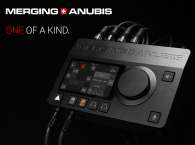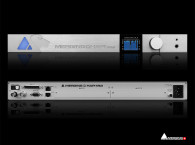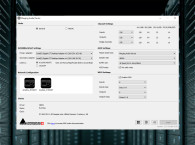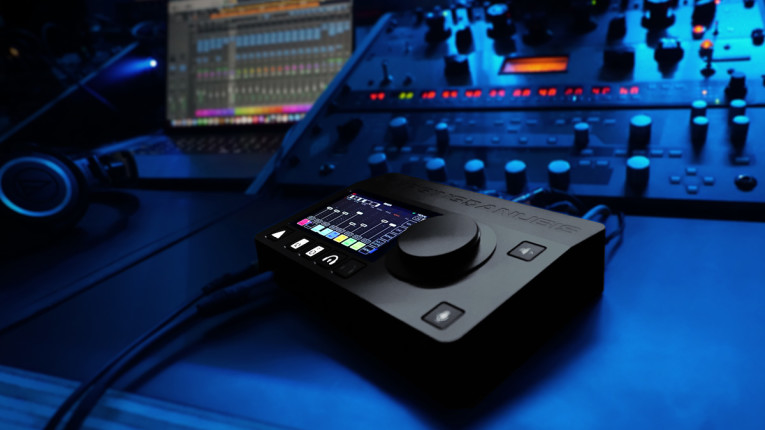
One could say that the greatest thing about the Merging+Anubis recording interface is in its incredible power and flexibility, becoming a true Swiss army knife for audio engineers. It's greatest weakness resides precisely in its immense power, which equates to the complexity of explaining what it does and what it's possible.
In fact, not even Merging knows exactly what to call the Anubis, which is available in two variants: Merging+Anubis and Merging Anubis SPS. The SPS hardware offers an additional network connection for either redundancy or to eliminate an external switch, while the standard Anubis offers an EtherCon connector for extra connectivity reliability. The SPS has the added benefit of being able to add extra I/O without the need to add an external network switch, or work in full ST2022-7 redundancy mode for extra safety. A real bonus for location recording and live applications.
And users need also to choose a model depending on if they are simply recording in PCM up to 192kHz, in which case they just need the "Pro" model, while those users committed to Hi-Res Audio and working in DXD/384kHz or in DSD, will need the "Premium" model.
Whatever flavor they choose, users get the same beautiful black aluminum unibody case with the same multi-touch display with all the same control possibilities. In the display they just need to activate the corresponding Mission, according to what the Anubis is being used for - in order to activate the exact software tools needed for each application.
The new Music Mission is now available after an intensive period of beta testing with an international roster of leading musicians, engineers and producers. "The original claim of being able to optimize the feature set by loading different software has been fully realized," the Swiss company proudly states.
The Music Mission can be downloaded by existing users free of charge and all new orders will be shipped with both Music and Monitor Missions loaded. When switching on the unit, choosing the Mission is a press of the touch screen and either loads the versatile monitor controller or the Music Mission, opening up a low latency mixer with multiple effects and up to 48 inputs and 24 outputs.
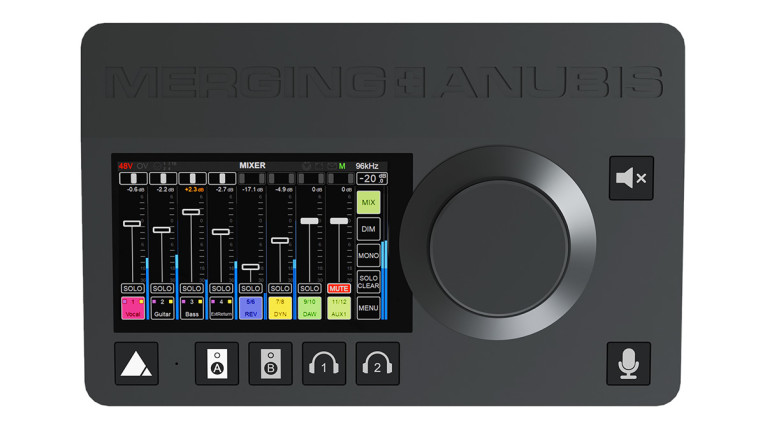
The size of the mixer depends on the number of AoIP devices connected to the network but instead of a complex matrix to manage I/O sources and destinations, the newly developed PEER and UNITE features add the additional channels to the mixer with a simple screen tap. Routing can be also easily managed from the Anubis touch screen without the need to be a network technician.
"Power and versatility like this could never be achieved with a conventional USB or Thunderbolt audio interface. Although you initially see the faders and a few buttons, there are full channel strips from top to bottom with local and remote control of preamps, EQ, Dynamics, Reverb, Sends, Auxes and features such as; Pan, Solo, Solo PFL, Mute, Linking, Grouping, Naming and more," the company explains.
In fact the Music Mission software embeds multiple mixers which allows the creation of from one to five different mixes for all the performers’ cues or programs. Different input sources or a unique mix balance can be routed to any outputs thanks to the flexible bus routing. Additionally, there are 18 x Snapshots to save and fully recall any of the mixers, masters, songs or setups with the possibility to customize mixer layouts, depending on whether the session is taking place in the studio or live on stage. All this can be done without having a DAW connected.
And as Merging further explains, according to the "mission of the day" users can simply activate the correct software configuration. One day a user needs to create a great mix, and to be in complete control of monitoring, and will activate the Monitor Mission. Next day the intention is to record a band or rehearse for the next gig, and the Music Mission will control all the power of an ultra-low-latency mixer and feed individual cue mixes to each musician.
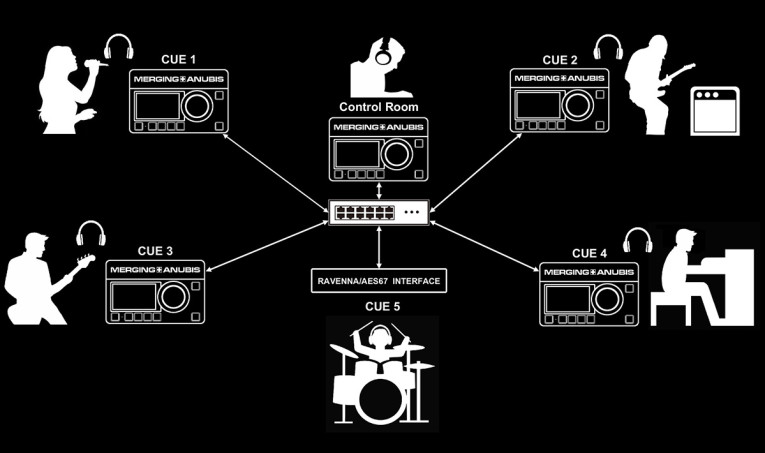
Users don’t need to switch to the Monitor Mission to know what they are doing. The Music Mission provides all the necessary monitoring controls with; Ref, Dim, Mono, Downmix and exclusive monitoring Mutes. Along with A/B speaker set support, 2.1 and 2.2 with crossover and built-in crossfeed for headphones. This also applies to being able to create and monitor artists’ cues, interact and talk to any musician or all of them at once.
"The Music Mission includes monitoring features that are the equal of large scale consoles. The Anubis Ultra-Low Latency Cue Mixers are the perfect tools to put musicians at ease and have them deliver the best performances possible. Cues can be used when recording, overdubbing, playing live or for independent program distribution," Merging adds.
Included free with every Anubis unit are 3 high quality effects that can operate at the highest PCM frequencies. These can be applied to monitoring, recordings or live performance on any Strips, Buses or Returns and recalled at any time on one of the 18 available effects snapshots.
The Anubis Music Mission 4 band EQ is built on the existing and universally acclaimed quality of the Pyramix EQ-X and offers Extreme Definition filtering at sampling frequencies up to DXD (352.8kHz). EQ can be applied to any inputs (Local or Peered) or to any bus output (e.g. for headphones or room correction). 21 EQ instances are available at any sampling rate.

The Anubis Built-in FPGA Dynamics effect includes multi-modules. 1x Gate, 1x Compressor and 1x Limiter that can be combined in series, with each module having its own parameter values. Outputs buses or strip channel, can be limited or compression applied to your strips, gate the snare or kick, compress and limit the vocals, compress the drums in parallel and more. The Dynamics can operate in Mono or Stereo mode (Link Dyn) and 64x Dynamics instances are available at 44.1/48kHz, 32 at 88.2/96kHz and 8 in DXD/384kHz.
An ideal stereo reverb to put the performer at ease can be added to the ultra-low latency mixes on vocal, guitars, drums and more. Parameters can be dialed in from a simple user-friendly interface to quickly give the performer a sense of space. Using low diffusion values will increase the reflexional effect and perform as a delay. Applying effects to the performers’ ultra-low latency cue mixes and give them the perfect listening environment with Equalization, Compression and Reverb on their channel inputs. Those effects can be used in standalone, or can be routed back to a DAW for recording or for loopback processing applications.
Users can also use their favorite external hardware such as a distortion pedal or an analog hardware EQ, since the Music Mission has 3 Sends for externals so that users can quickly integrate those into the mixer and apply those effects to any Channel Strip. Included in all missions are tools that allow the user to Expand, Monitor, Mix and Route any I/O anywhere over the network with quick and simple solutions. All that can be done from a single Anubis, which can be kept in operation with standalone devices interconnected. With the Anubis Peering feature, users can also expand Anubis I/Os without the need of any computer to set it up.
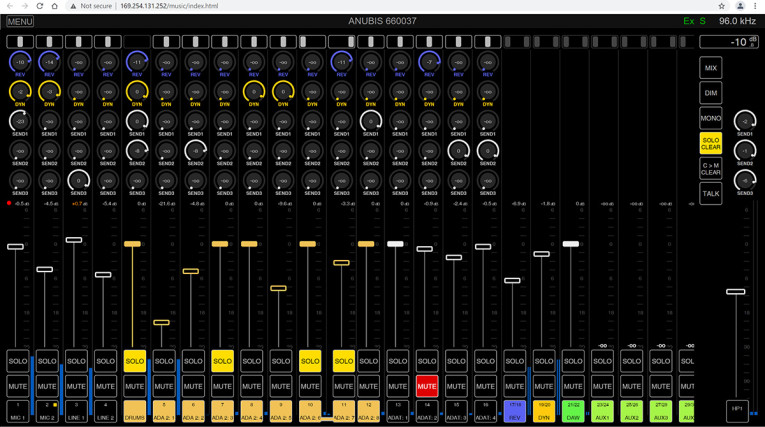
There is also an automatic AoIP Stream patching feature included in the Merging drivers that allows a user to quickly connect I/O streams between the Anubis and the DAW without the need for any AoIP knowledge or additional application. The Music Mission is expandable to 48 inputs channels and 24 outputs within the Anubis mixer, when adding AoIP interfaces to the setup. And if the TFT display on the Anubis hardware is a little small, the web app (pictured above) allows full overview and remote control from any computer or tablet, while it is also possible to adjust the mix from any position in the stage using a smartphone.
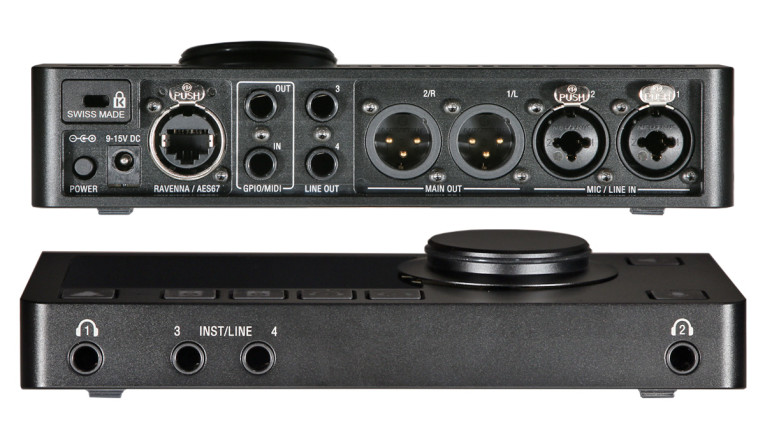
Both missions can be supplied on the Pro or Premium versions of Anubis and also the Pro and Premium versions of the Anubis SPS. Like all Merging Technologies' products, Anubis runs over Ravenna, and IP-based network solution for real-time distribution of audio and other media content based on standard network protocols and technologies. Ravenna is designed to meet the strict requirements of the pro audio market featuring low latency, full signal transparency and high reliability and is fully AES67 and ST2110 compatible. With a capacity of nearly 8 x MADI streams over a single Gigabit Ethernet link, it is also the first and only Layer-3 based IP audio protocol with full support for high-channel count DXD and DSD signals.
www.ravenna.alcnetworx.com
www.merging.com





